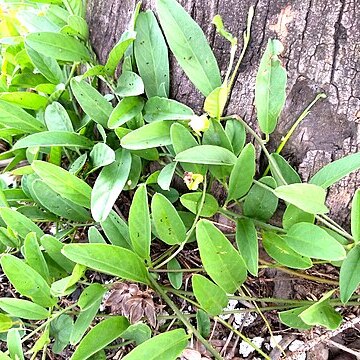Herbaceous vines. Leaves linear to ovate or elliptic, often mucronate, entire. Flowers axillary, solitary or in few-flowered dichasia; sepals 5, herbaceous, un-equal, the 3 outer sepals larger, often decurrent on the pedicel; corolla white, broadly funnelform, the limb 5-dentate or sub-entire with 5 pubescent interplicae; stamens and style included, the pollen pantocolpate; ovary glabrous, 2-locular, the locules bi-ovulate; the disc small or absent; style 1, slender, the stigma bi-globose. Fruits capsular, globose, 2-celled, 4-valvate; seeds 4, glabrous.
Prostrate or twining herbs. Leaves linear to ovate, often mucronulate. Flowers axillary, solitary in the African species, on long peduncles. Sepals unequal, the outer 3 much larger, ovate and more or less decurrent on the peduncle. Corolla funnel-shaped, usually entire, hairy. Stamens included. Ovary 2-locular, 4-ovuled; style included, simple; stigmas 2, thick, globular or oblong. Capsule 2-locular, 4-valved and 4-seeded. Seeds black.
Sepals 5, herbaceous, acute or acuminate, the 3 outer ones much larger than the inner, ovate and more or less decurrent on the peduncle, enlarged in fruit.
Ovary bilocular, 4-ovuled, glabrous; style 1, simple, filiform, included, stigmas, 2, thick, globular or oblong.
Corolla funnel-shaped, usually entire outside, with 5-well-defined hairy midpetaline bands.
Leaves petiolate, linear, oblong, lanceolate, ovate or elliptic, often mucronulate.
Flowers axillary, solitary in the African species, on long peduncles.
Capsule ovoid or globose, bilocular, 4-valved and 4-seeded.
Stamens 5, included, filiform; pollen smooth.
Seeds trigonous or globose, black.
Prostrate or twining herbs.
Disk small or absent.

